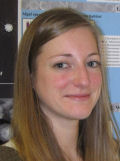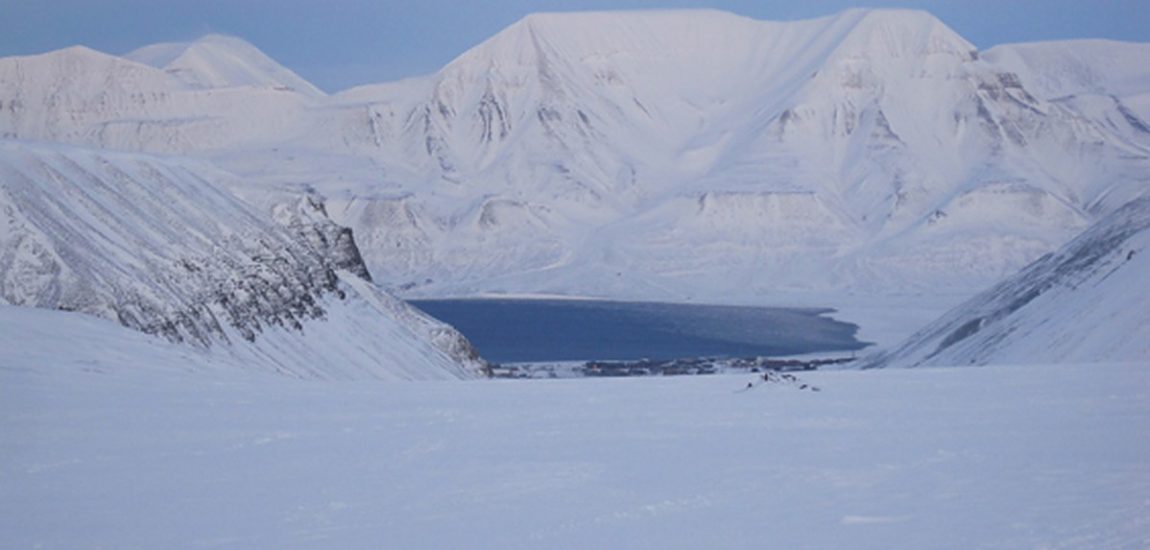
Svalbard – The northernmost everything
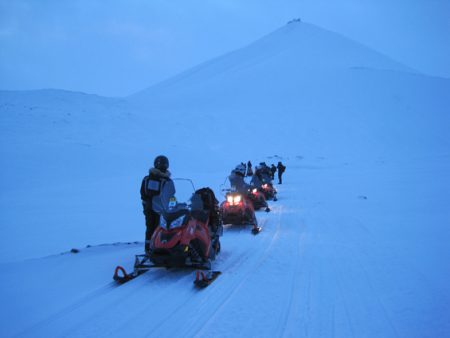
Here in Svalbard one can find the northernmost everything: climbing wall, post office, piano… and most importantly university – the reason I came up here. Longyearbyen, the ‘capital’ of Svalbard and 79°N, hosts the University Centre in Svalbard (UNIS) – the northernmost university which offers a wide range of courses in Arctic Geology, Arctic Biology, Arctic Geophysics and Arctic Technology. As a third year PhD student in glacial biogeochemistry and working on microbiological and geochemical aspects of glaciers, I decided it was about time to learn more about their physical aspects to better understand the bigger picture and applied for the glaciology course at UNIS. The course provides a good overview on all things to do with glaciers, not only based on class room lectures but hands on in the field. Svalbard is the perfect place with 60% of its surface covered by glaciers.
I arrived in Svalbard at the beginning of February in complete darkness (I saw my first Aurora borealis!), the sun still a few weeks away from reappearing, and temperatures below -20 degrees. Very soon I realised it was a bad idea to have my mittens and down jacket somewhere at the bottom of my suitcase and the short walk from the airport bus to the accommodation was a bit painful.
The first two days were dedicated to safety training which is slightly different in Svalbard than anywhere else and involves shooting a rifle and flare gun in case of a polar bear encounter (which luckily didn’t happen!), driving a snowmobile up and down steep slopes (a lot of fun!), how to properly pack a sledge, and avalanche and frostbite awareness.
The first weekend was more than exciting as we were hit by a gale and the walk to the northernmost gym was an adventure in itself. A simple 20 min walk turned into a 40 min struggle. However, the weather changes very quickly here and within a couple of days one may experience temperature changes of -20°C (that feel more like -40°C with the wind chill factor) to +2°C which suddenly become to feel very pleasant.
In 4 weeks I learned a lot about the mass balance of glaciers, ice dynamics and ice sheet modelling. I visited several glaciers, learned how to dig snow pitches and interpret different snow layers and even got the chance to get a look at different ice structures from inside a glacier by exploring an ice cave.
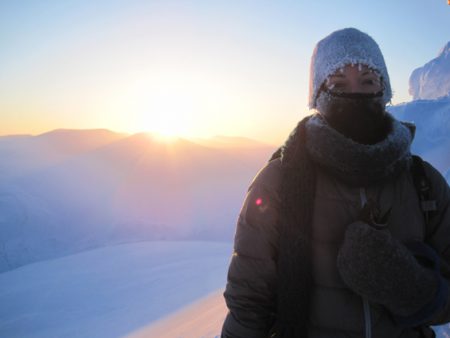
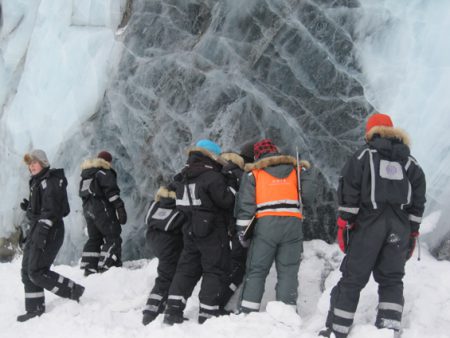
UNIS is not only a great place to learn everything about the Arctic in the class room as well as in the field, but also to meet many like-minded people (which became friends) and a great platform for future interdisciplinary collaborations.
So I consider myself extremely fortunate to have been able to participate in this course which was a great experience – scientifically and personally. Everything I have learned and experienced has been very inspiring for my present as well as future projects.
About the author
Steffi Lutz is a PhD student in the Cohen Geochemistry group in the School of Earth & Environment at the University of Leeds. She is supervised by Liane G. Benning, Alexandre M. Anesio (University of Bristol) and Fiona Gill and is working on the biogeochemistry of glacial surfaces.
